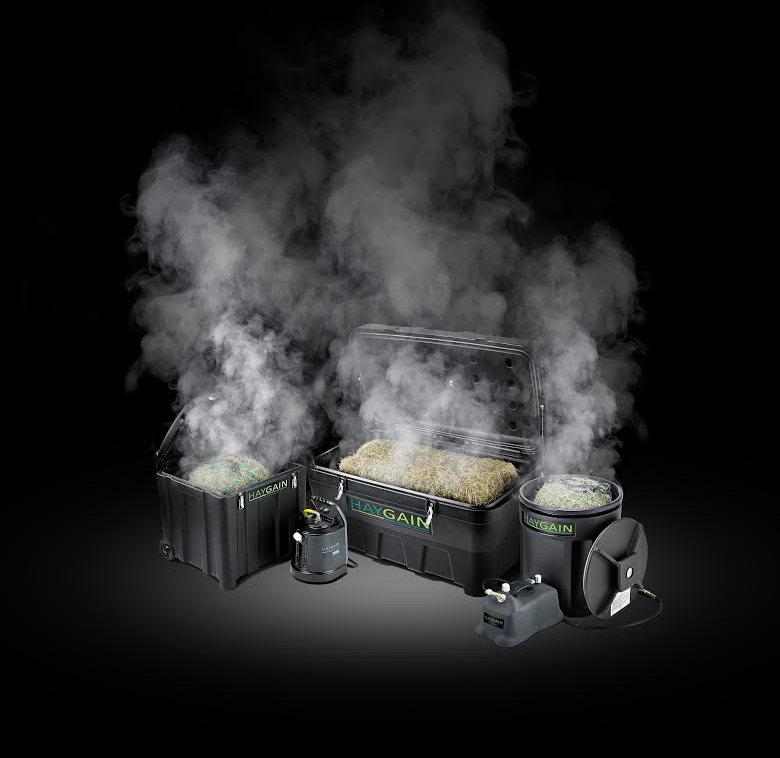Posted: 3rd October 2018 | Back to news feed

As we get ever closer to winter in the Northern Hemisphere, horse owners can look forward to months of reliance on stored forage to ensure their horses are warm and comfortable during the colder months of the year. Hay and haylage are by far the most popular types of forage fed to equines when weather or lack of grazing prevents access to grass, but both can vary widely in quality. Even good quality hay can contain high levels of harmful respirable particles, especially if it was harvested during a hot dry summer such as the one we have just had.

In order to reduce the respirable particles of dust (anything that the horse will breathe in when it is eating it) from hay, horse owners often turn to one of two methods – soaking or steaming. Soaking hay or wetting it down with a hose are cheap and easy ways to remove dust, but these methods do have side effects on the hay which can in turn cause other horse health issues.
Here we compare the performance of soaking or steaming around 6 key subjects that impact horse health and wellbeing:
- Respirable Particles
Steaming reduces the respirable particles found in hay (so the dust, mould, bacteria and other microbes breathed in by the horse) by 98%, soaking dampens down 90% of respirable particles.
- Bacterial Content
Soaking dramatically increases the bacterial content of hay – a 10-minute soak will see bacteria increase by 150%, severely impacting the hygiene quality of the hay. Steaming, on the other hand, reduces the bacteria levels in hay by up to 99%, meaning it is all but free from harmful microbes.
- Palatability
Steamed hay is highly palatable, making it ideal for fussy eaters, horses recovering from surgery and those who for require hay of a lower nutritional value, whereas several studies have shown that soaking reduces the palatability of hay – particularly when forage is soaked overnight.
- Nutritional Value
Soaking leaches nutrients out of hay, reducing its mineral and protein levels. While this may be beneficial for horses on a limited diet, the other downsides of soaking mean that it is not a great benefit. Steaming has no effect whatsoever of the nutritional quality of hay, so is perfect for sport horses who need every last bit of energy from their food.
- Environmental Impact
Soaking a bale of hay uses between 60 and 100 litres of water, whereas steaming the same volume of forage will only use 4 litres of water. Steaming also produces no toxic outflows, but water left behind after soaking hay can be 9 times more polluting than raw sewage.
- Labour
Hay is very heavy and unwieldy after it has been soaked and moving a bale of soaked hay even in a sturdy wheelbarrow can be hard work. Steamed hay is clean to handle and there is no difference in weight versus untreated hay.
This simple comparison shows that there is limited benefit to soaking hay, and this is clearly offset by a myriad of negative side effects that impact the quality of the hay and the environment. Steaming hay makes it safer for the horse to eat, has no impact on nutritional value, promotes palatability and is better for the environment – the choice is clear and simple! Haygain Steamers are available in a range of sizes suitable for every horse owner and yard size and are quick and straightforward to use. Take a look at the entire range here: https://haygain.co.uk/collections/equine-hay-steamers
The Equestrian Index newsfeed is compiled from articles submitted by advertising members and expresses the opinions of those members. Watsons Directories Ltd shall not be held liable for any inaccuracies or mis-statements therein.